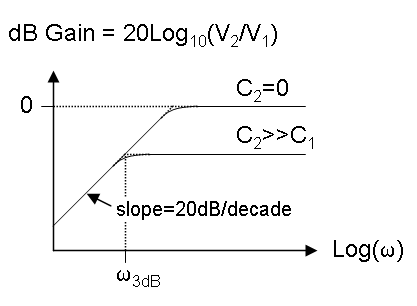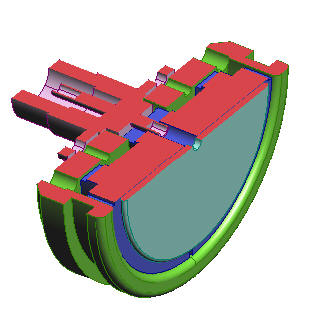Equation
Parameters
Diagram
V-Dot Probe Applet
Goto: Coaxial Section Output Format Notes
Equation
Parameters
Diagram
If you know dV/dt then enter 1 second for dt and put dV/dt in for dV1 with volt units (as done for the default values).
The Vdot probe is essentially a high pass RC filter with a corner frequency equal to (1/R(C1+C2)) as shown in the bode plot below.

Care must be taken to ensure that the 3dB point is much higher in frequency than the range of interest.
In most cases, C2>>C1 so that the 3dB frequency is just 1/RC2
The phase is +90 degrees for low frequencies, +45 at the 3dB point, and 0 at high frequencies.
For frequencies above the 3dB point, the probe acts as a capacitive divider.
The values above are from the design of a typical Vdot probe with a center conductor voltage rising to ~800 kV in about 100 ns. The peak dV/dt was estimated from a circuit code. C2 was calculated from a field plotting code. The actual geometry is cylindrical, but the ID is ~6" and OD is ~12" so the approximate planar gap is 6". The probe is placed in a recess in the outer conductor so the surface is flush. The probe is just a 1.8" diameter disk held in a metal cup with plastic support. The output is through an N connector with center pin attached to the disk as shown below:

Usually, you'll want the peak output large enough to overcome noise, but much less than the breakdown strength of the connectors. Also, the 3dB point is usually desired to be >500 MHz (the bandwidth of a lot of the scopes).
Copyright © 2006-2021 Raymond J. Allen